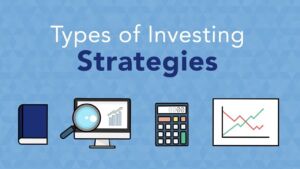Stock investors tend to obsess about stock picks, with a desire to discover the new Apple, Google, Tesla, or some such stock that could make all the difference. But even when they discover them, most investors never take full advantage of these discoveries. The reason is rooted in human psychology. It’s what psychologists Daniel Kahneman and Amos Tversky called “failure of invariance.” The maxim, “let your profits run and cut your losses short,” is truly excellent advice for investors, but due to this failure of invariance, we are hardwired to do the exact opposite: we tend to gamble with our losses and take profits while they’re a sure thing.
We’re slow to dump into a bad investment and might be tempted to “average down” since that stock is now even cheaper. At the same time, we’re eager to grab at 20%, 50%, or 100% gains if the picking was good. Doubling our money on a trade disposes us to take that victory lap and cash in lest the good fortune should evaporate: ka-ching, grab the cash, nobody went bankrupt by taking profits, etc.
On aggregate, the picture is very clear: as many as 4 out of 5 retail brokerage clients lose money. Not underperform, they actually lose money (in spite of enjoying the longest and biggest bull market in history). The figures are further corroborated by a large, multi-year study by British market regulator FSA (now renamed FCA) who found that 81% of retail investors lose. So clearly, the business of stock picking isn’t the answer. Here’s how Gen-Z investors’ stock picks performed this year:

So what is the solution? The solution is strategy, plain and simple. May of those super-stocks like Apple, Tesla, Microsoft, Google… their price appreciation spanned years.

Tesla started its epic rise in 2010; it soared 10-fold from 2012-2014, then fluctuated in a slowly rising range only to soar another 14-fold from 2019-2021. Tesla shares traded at barely over $3 in July 2010 but peaked at over $1,200 last year: a nearly 290-fold gain. How many investors would have had the patience and perseverance to turn $1 invested in TSLA into $290 in 2021? Or even $10 in 2013? How many would resist the urge to take the profits far too early, missing out on most of the windfall? The answer, I think, is most of us.
Perhaps the only investors who would catch such a move would be the ones that didn’t trade – like the old lady who purchased the stock of Nokia back when the company was making rubber boots. Her rationale was that people would always need boots, so Nokia stock seemed like a safe bet. Past that point, she paid no attention to her portfolio only to discover many years later that she was a multi-millionaire (this story was reported at some point in the early 2000s).
But apart from such lucky strikes, the proper approach should be to combine stock picks with strategy. And patience. And iron discipline. What strategy? Without a doubt, it should be a systematic trend following. For stock market investors, the relevant variant of trend following is the momentum strategy, which has incidentally, provided the most robust empirical evidence for the idea that market trends are the most powerful drivers of investment performance.
You’ll find a condensed overview of momentum investing in the 10-min YouTube segment:
Even Benjamin Graham and Warren Buffett owed all of their outperformance to momentum plays. Strip those out and both fall short of their benchmarks, as I summarized in this article+video:
Warren Buffett and Benjamin Graham: momentum players, NOT value investors!
In unprecedented times, navigating the markets is more difficult perhaps than it ever was. All investors, traders, and hedgers should adopt systematic trend following as a navigation aid through the uncertainty that lies ahead. And even forsworn fundamentalists, trend following should still be considered – at the very least as a valuable source of the second opinion.

